Most stable radical among the following is:
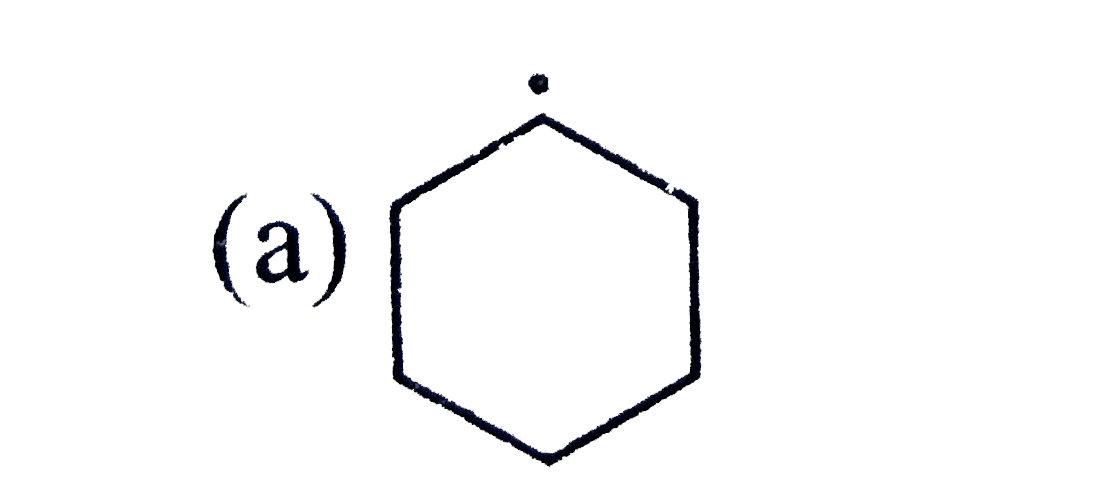
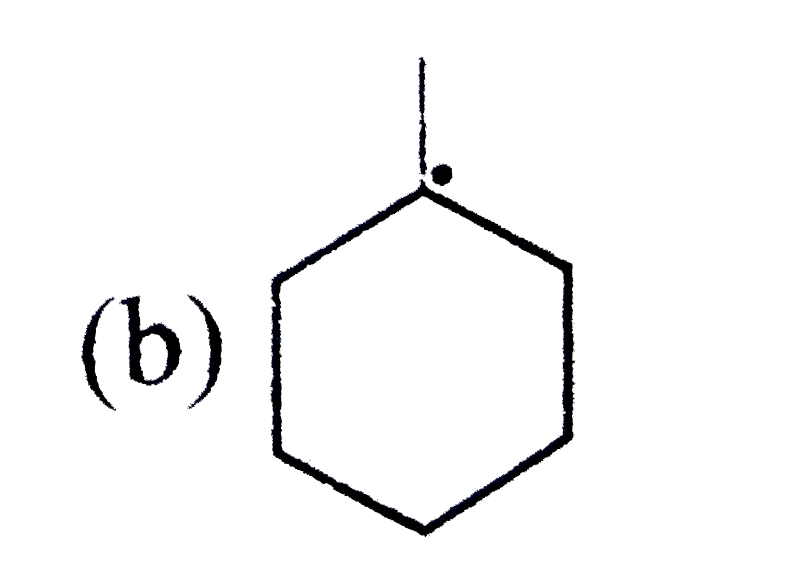
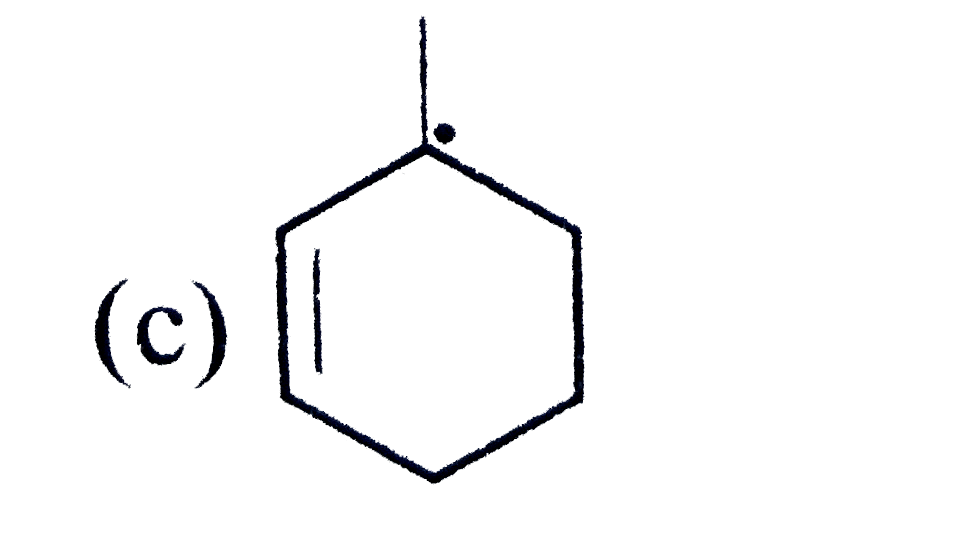
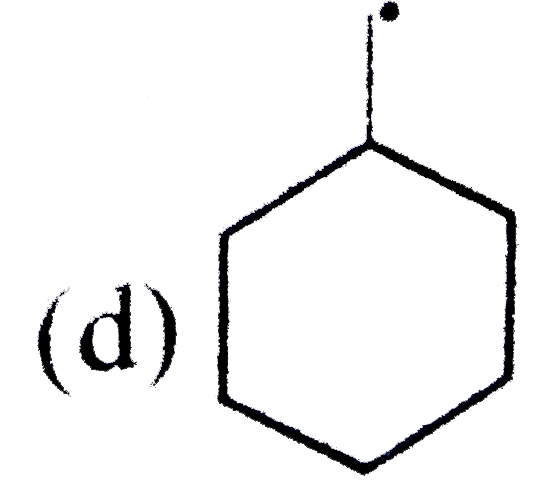
The correct Answer is:C
To determine the most stable radical among the given options, we will analyze each radical based on hyperconjugation and resonance stabilization.
1. Identify the Radicals:
- Let's denote the radicals as A, B, C, and D for analysis.
2. Analyze Radical A:
- Radical A has 2 hydrogen atoms attached to the carbon bearing the radical.
- Hyperconjugation: Each hydrogen can contribute to hyperconjugation. In this case, there are 4 hydrogen atoms contributing to hyperconjugation.
- Stability: Moderate stability due to limited hyperconjugation.
3. Analyze Radical B:
- Radical B has 3 hydrogen atoms on one side and 2 on the other.
- Hyperconjugation: This gives a total of 7 hydrogen atoms contributing to hyperconjugation.
- Stability: More stable than A due to increased hyperconjugation.
4. Analyze Radical C:
- Radical C has 2 hydrogen atoms, 1 hydrogen atom, and 3 hydrogen atoms on the respective carbons.
- Hyperconjugation: This gives a total of 6 hydrogen atoms contributing to hyperconjugation.
- Additionally, there is a double bond present which can participate in resonance stabilization.
- Stability: The resonance effect from the double bond significantly increases the stability of this radical, making it the most stable among the options.
5. Analyze Radical D:
- Radical D has only 1 hydrogen atom attached.
- Hyperconjugation: This contributes to only 1 hydrogen atom for hyperconjugation.
- Stability: This is the least stable radical due to minimal hyperconjugation and lack of resonance.
6. Conclusion:
- Comparing the stability of all radicals:
- A: Moderate stability (4 hyperconjugation)
- B: More stable than A (7 hyperconjugation)
- C: Most stable due to resonance and hyperconjugation (6 hyperconjugation + resonance)
- D: Least stable (1 hyperconjugation)
- Therefore, the most stable radical is C.
Final Answer:
The most stable radical among the given options is C.
- Let's denote the radicals as A, B, C, and D for analysis.
- Radical A has 2 hydrogen atoms attached to the carbon bearing the radical.
- Hyperconjugation: Each hydrogen can contribute to hyperconjugation. In this case, there are 4 hydrogen atoms contributing to hyperconjugation.
- Stability: Moderate stability due to limited hyperconjugation.
- Radical B has 3 hydrogen atoms on one side and 2 on the other.
- Hyperconjugation: This gives a total of 7 hydrogen atoms contributing to hyperconjugation.
- Stability: More stable than A due to increased hyperconjugation.
- Radical C has 2 hydrogen atoms, 1 hydrogen atom, and 3 hydrogen atoms on the respective carbons.
- Hyperconjugation: This gives a total of 6 hydrogen atoms contributing to hyperconjugation.
- Additionally, there is a double bond present which can participate in resonance stabilization.
- Stability: The resonance effect from the double bond significantly increases the stability of this radical, making it the most stable among the options.
- Radical D has only 1 hydrogen atom attached.
- Hyperconjugation: This contributes to only 1 hydrogen atom for hyperconjugation.
- Stability: This is the least stable radical due to minimal hyperconjugation and lack of resonance.
- Comparing the stability of all radicals:
- A: Moderate stability (4 hyperconjugation)
- B: More stable than A (7 hyperconjugation)
- C: Most stable due to resonance and hyperconjugation (6 hyperconjugation + resonance)
- D: Least stable (1 hyperconjugation)
- Therefore, the most stable radical is C.
The most stable radical among the given options is C.
Topper's Solved these Questions
- SOME BASIC PRINCIPALS OF ORGANIC CHEMISTRYBOOK - A2ZCHAPTER - SOME BASIC PRINCIPALS OF ORGANIC CHEMISTRYEXERCISE - Acid And Basic Strength
29 Videos
- SOME BASIC PRINCIPALS OF ORGANIC CHEMISTRYBOOK - A2ZCHAPTER - SOME BASIC PRINCIPALS OF ORGANIC CHEMISTRYEXERCISE - Bond Fission, Reagents, Reactive Intermediates And Their Stability
31 Videos
- SOME BASIC CONCEPTS OF CHEMISTRYBOOK - A2ZCHAPTER - SOME BASIC CONCEPTS OF CHEMISTRYEXERCISE - Section D - Chapter End Test
30 Videos
- STATES OF MATTERBOOK - A2ZCHAPTER - STATES OF MATTEREXERCISE - Section D - Chapter End Test
30 Videos
Similar Questions
Knowledge Check
Least stable radical among the following is :
A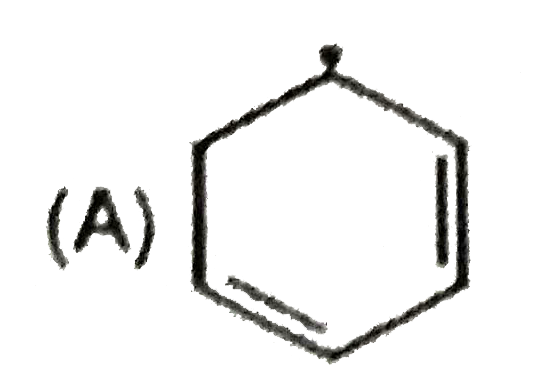 B
B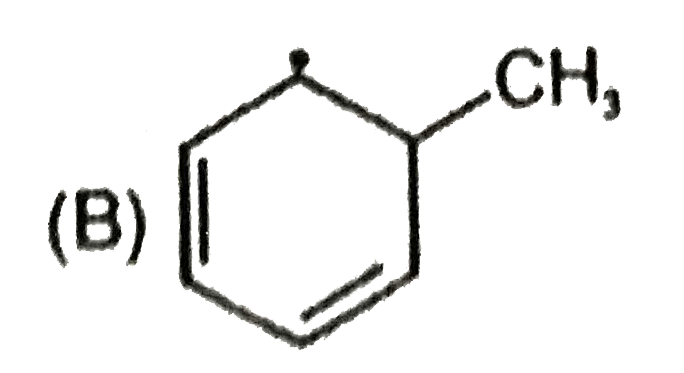 C
C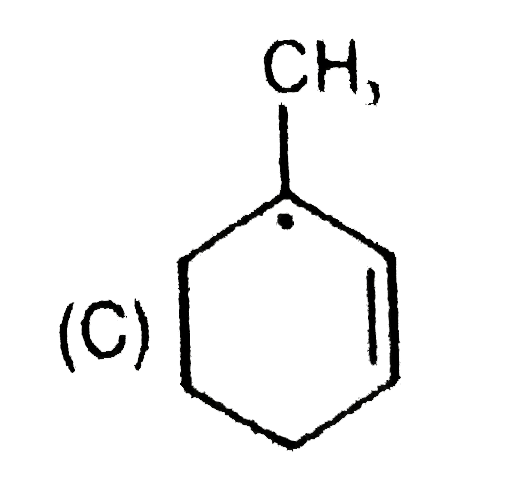 D
D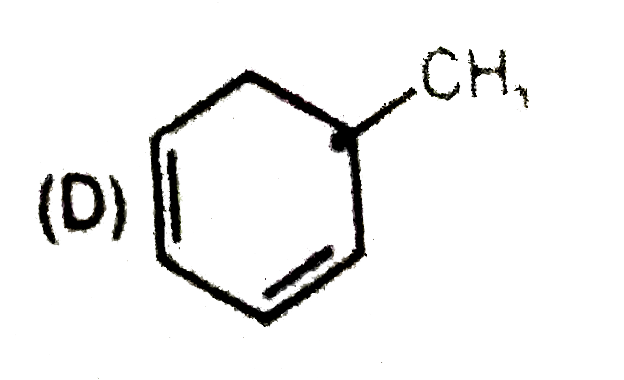
Most stable radical is
A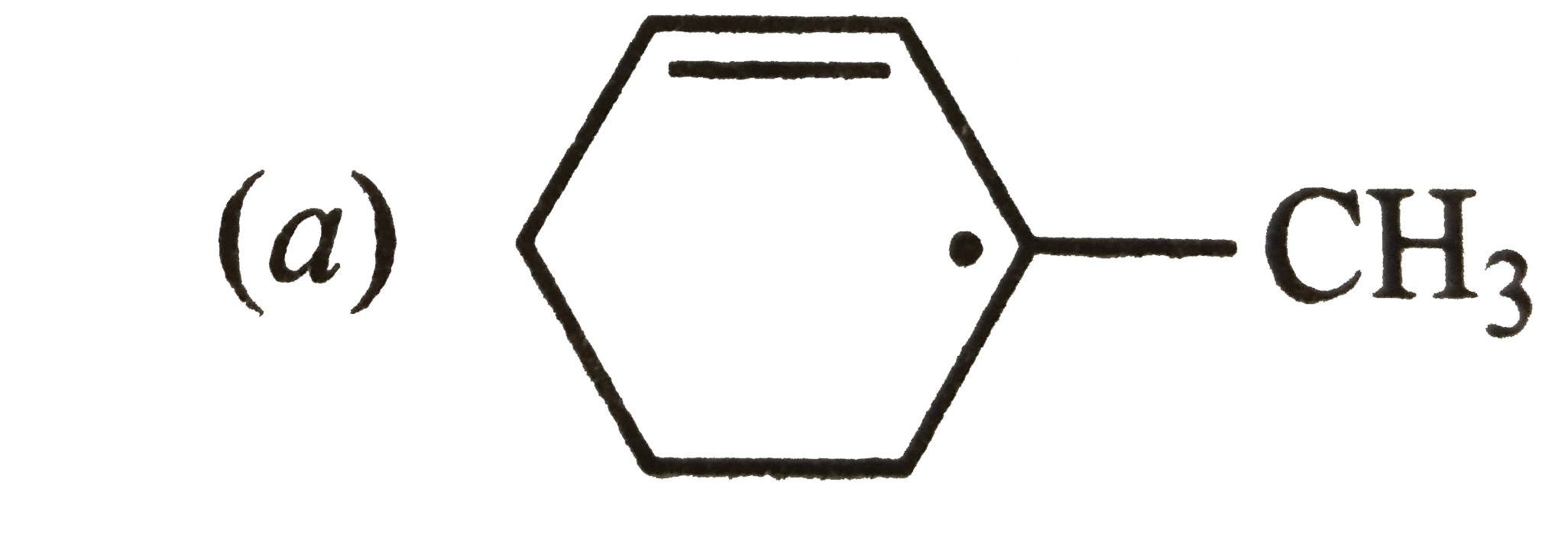 B
B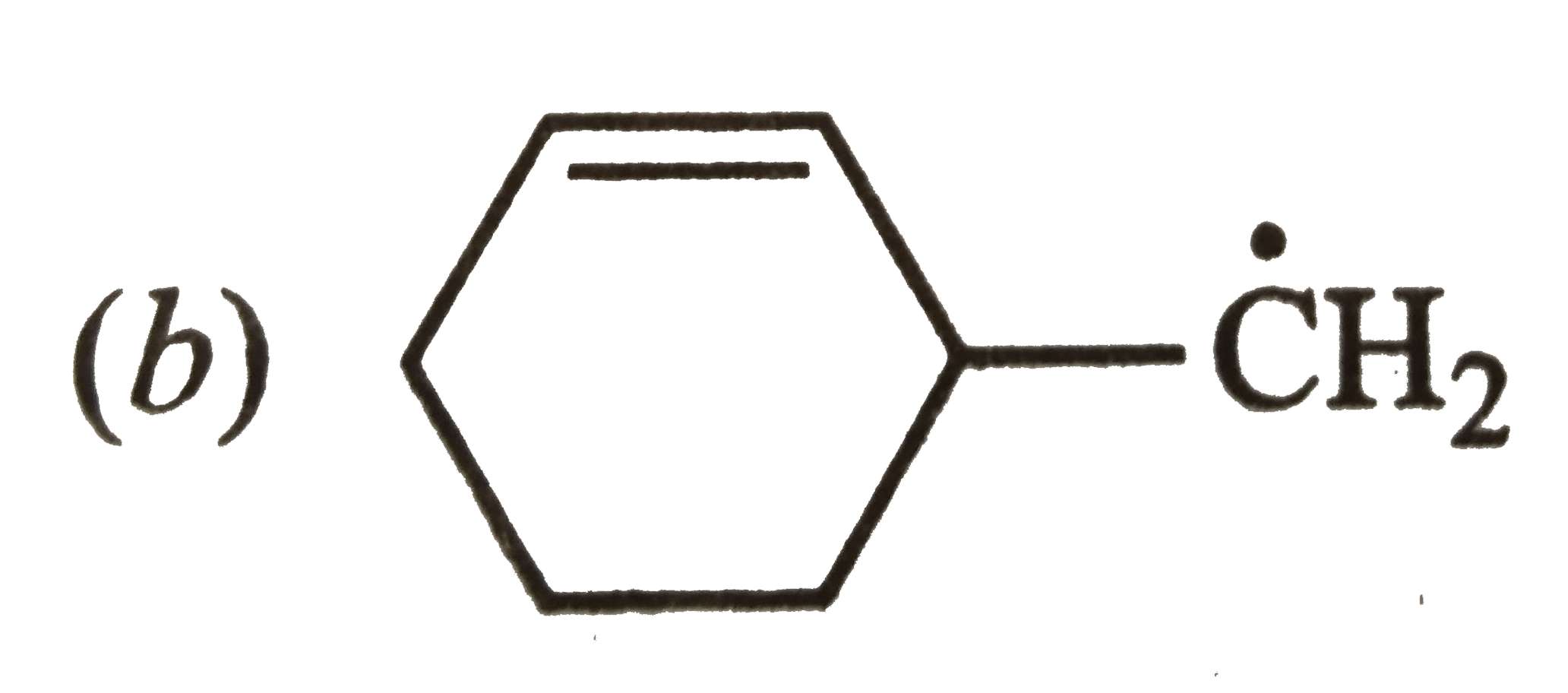 CCH2=CH⋅CH2DCH2=⋅CH
CCH2=CH⋅CH2DCH2=⋅CHMost stable radical is
A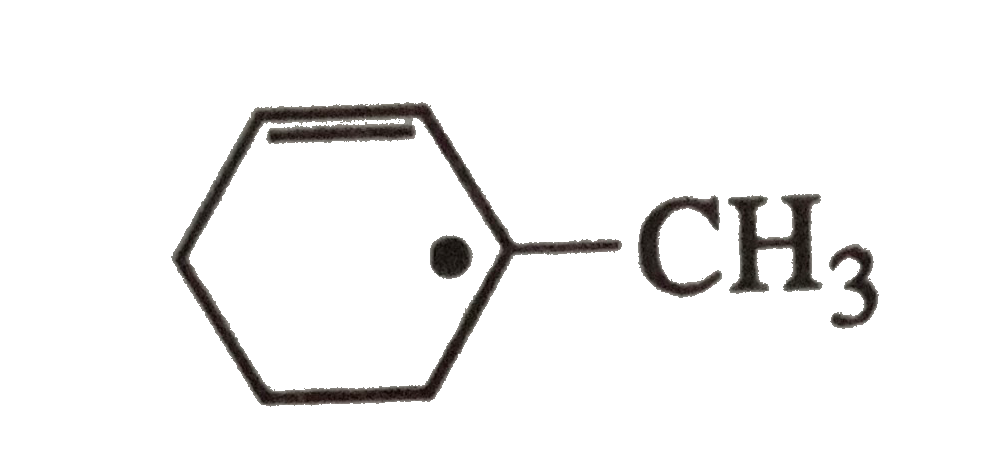 B
B CCH2=CH⋅CH2DCH2=⋅CH.
CCH2=CH⋅CH2DCH2=⋅CH.
The most stable free radical among the following is
View SolutionThe most stable free radical among the following is
View SolutionThe stablest radical among the following is
View SolutionThe least stable free radical among the following is ____ .
View SolutionMost stable carbanion among the following is
View Solution
